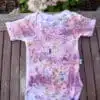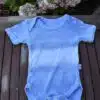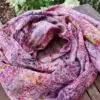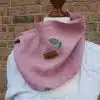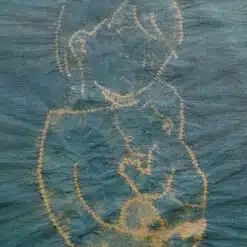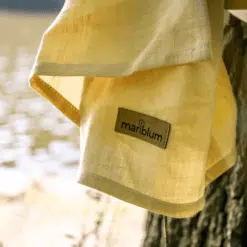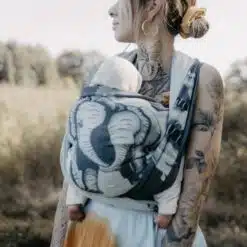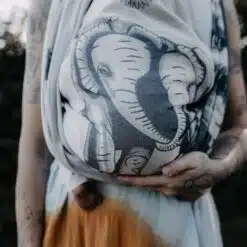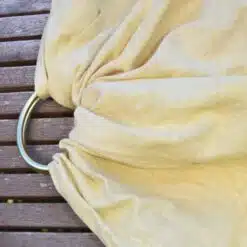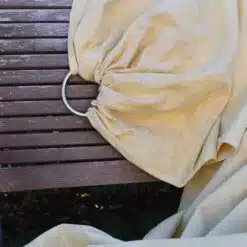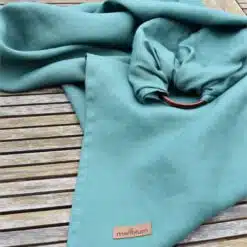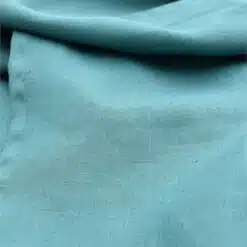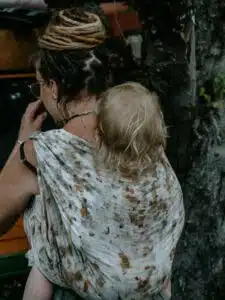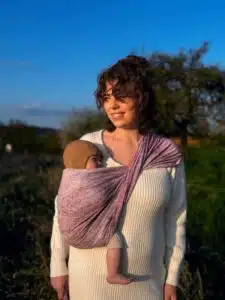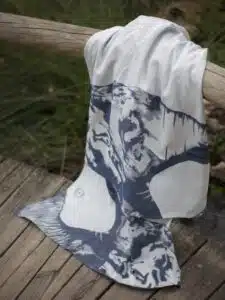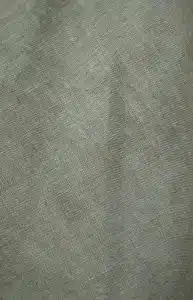Autumn, Babywearing News, Bonding, Nachteile des tragens, Winter
Carrying babies in winter
When the days get shorter and the cold starts to creep in, many parents ask themselves: “Can I carry my baby in winter – or is it dangerous?” This guide debunks common myths, reveals the honest truths, and talks about the small downsides of babywearing in the cold season — so you can stay warm, safe, and connected.
Table of Content-
- Why babywearing is more than just practical
- Myth 1: “Carrying spoils the baby”
- Myth 2: “Babywearing hurts your back”
- Myth 3: “Babywearing causes hip problems”
- Myth 4: “Babywearing in winter is dangerous”
- Myth 5: “Strollers are unnecessary”
- Where babywearing reaches its limits
- Winter babywearing – tips for warmth and less stress
- Conclusion – warmth, closeness & reality
- FAQ – Babywearing in winter
Why babywearing is more than just practical
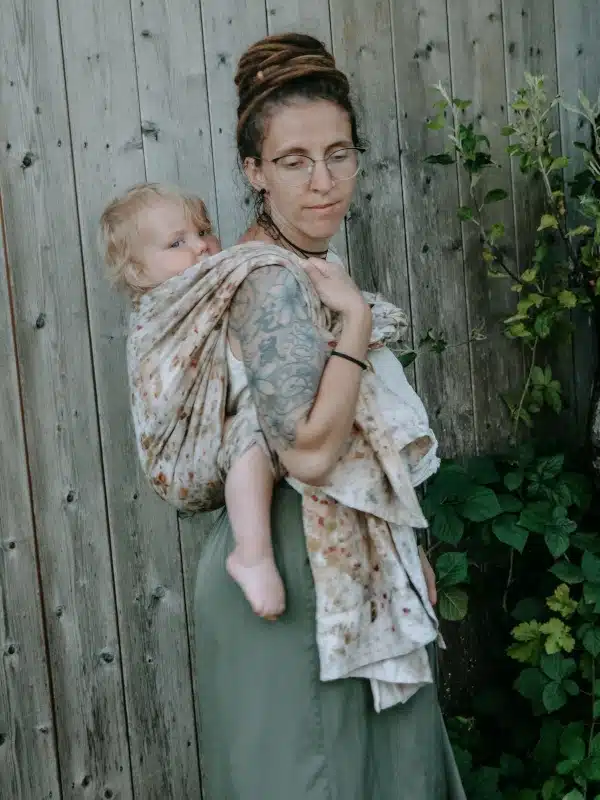
Anyone who has ever worn their baby in a wrap or ergonomic carrier knows the feeling: closeness, warmth, that little heartbeat against your chest. Babywearing isn’t a trend; it’s one of the oldest ways to nurture. It calms babies, builds connection, and can even ease crying phases. But it also requires knowledge — poorly adjusted carriers or loose wraps can become uncomfortable for you or your baby.
Myth 1: “Carrying spoils the baby”
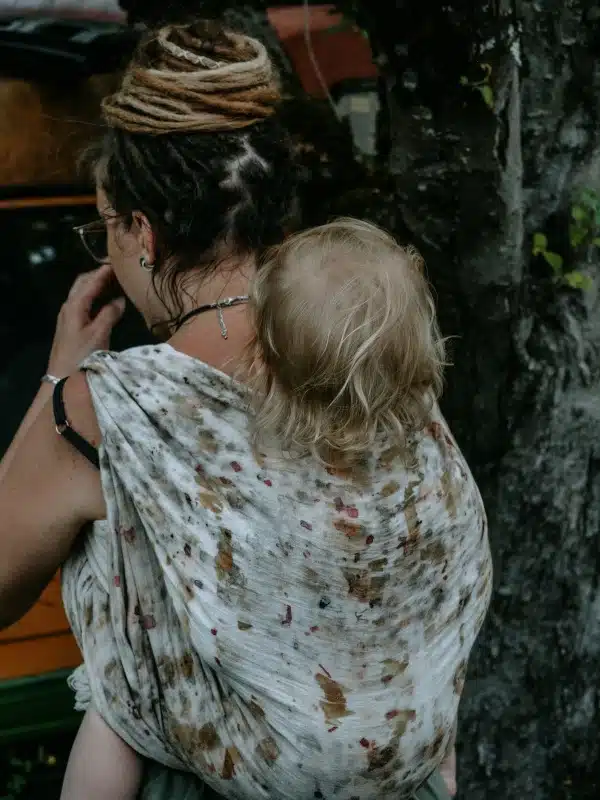
Babies can’t be “spoiled” — they can only be regulated. Physical contact is as essential as breathing. When you carry your baby, you’re not giving too much attention — you’re giving exactly what they biologically need.
Myth 2: “Babywearing hurts your back”
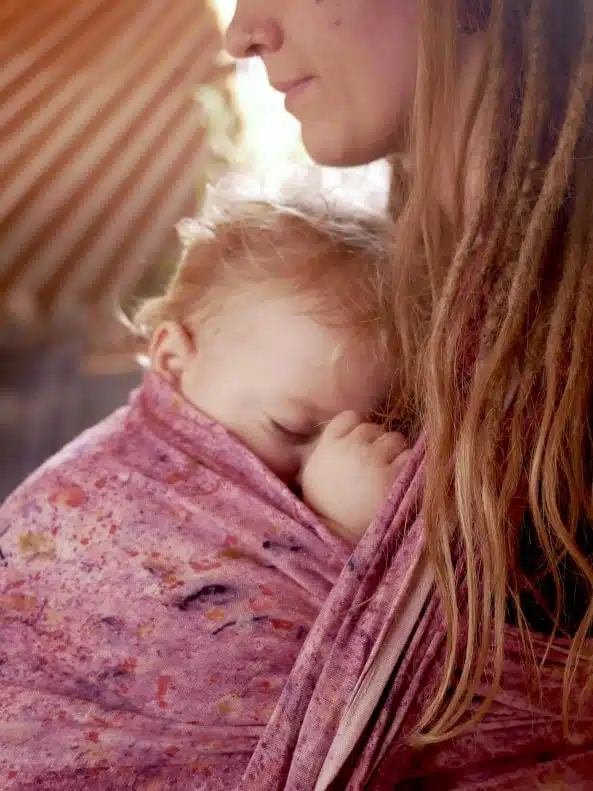
There’s a grain of truth here — if it’s done wrong. A well-fitted carrier or properly tied wrap distributes weight evenly across shoulders, back, and hips. Back pain happens mostly when the wrap is too loose or you stay in one position too long — both easy to fix.
Linen Fabric
Linen Fabric
Myth 3: “Babywearing causes hip problems”

Actually, the opposite is true. When your baby sits in the “M-position” (knees higher than bottom, rounded back), babywearing supports natural hip development. Quality wraps and ergonomic carriers are designed to promote exactly this posture.
Myth 4: “Babywearing in winter is dangerous”
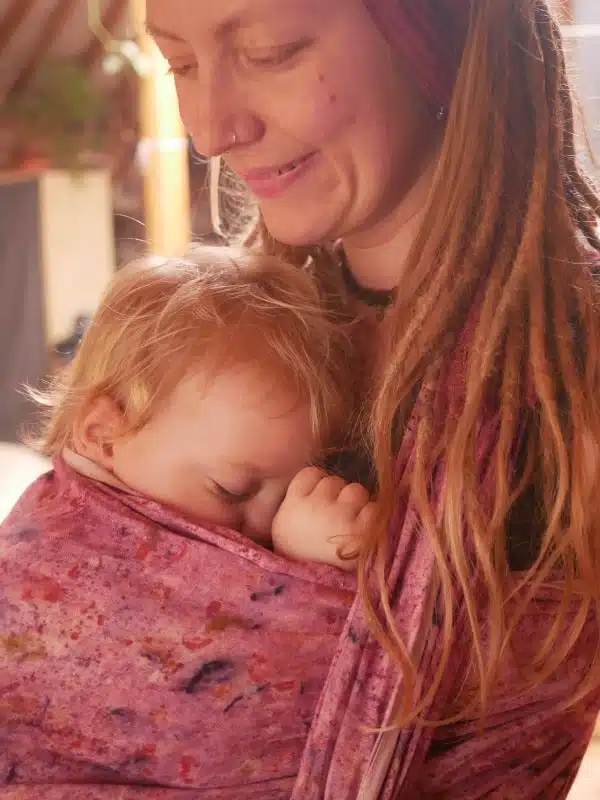
Quite the opposite — babywearing in winter has many benefits. Your baby stays close, feels your body warmth, and is better protected from wind and cold than in a stroller. Avoid thick snowsuits (they can compress and overheat). Instead, use the layering principle: thin wool, breathable layers, and a babywearing cover or jacket. Always keep the face uncovered and visible.
Cotton Fabric
Linen Fabric
Hemp Fabric
Myth 5: “Strollers are unnecessary”

Babywearing doesn’t mean giving up the stroller. It’s an addition, not a replacement. For long walks or when you need both hands, a stroller is practical. Flexibility is key.
Where babywearing reaches its limits

Carrying extra weight for months can be physically demanding. If you already have back pain or a weak pelvic floor, babywearing may become tiring. Emotionally, constant closeness can feel overwhelming. And yes — there are the small hurdles: wet jackets, sweaty layers, tangled scarves. Some babies also prefer lying down sometimes. That’s normal — listen and adapt.
Winter babywearing – tips for warmth and less stress
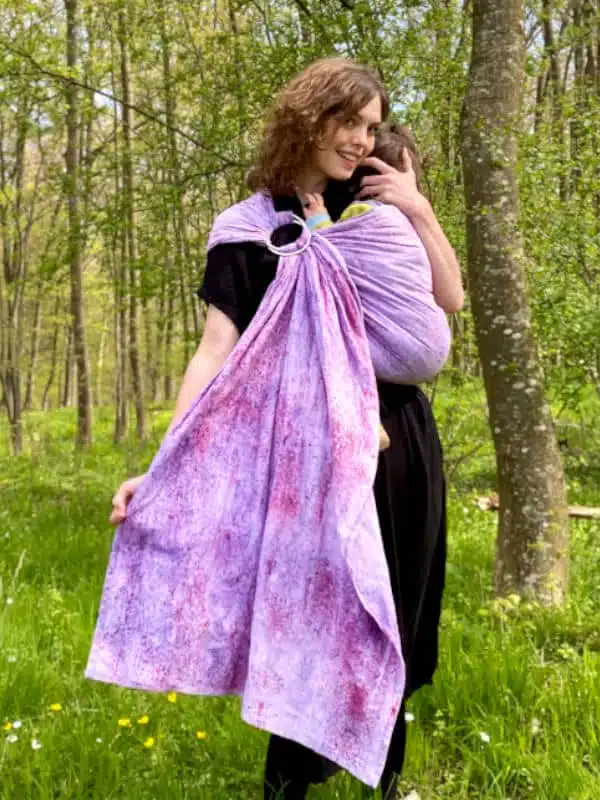
- Wear baby under your jacket: Keeps warmth consistent and prevents drafts.
- Keep baby’s face uncovered: Breathing must always be free and visible.
- Protect key areas: Feet, head, and neck get cold first.
- Stay active: Movement helps both of you stay warm.
- Adjust fit regularly: Tight and close equals comfort and safety.
Conclusion – warmth, closeness & reality
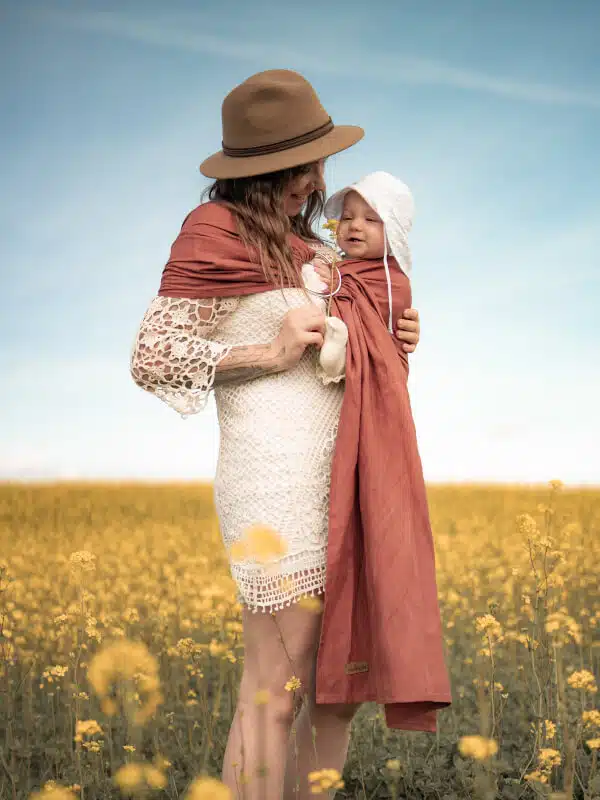
Babywearing isn’t a modern trend — it’s an ancient human instinct. It strengthens bonding, offers freedom, and creates security — but it also has limits. When practiced consciously and mindfully, the benefits clearly outweigh the challenges. In winter, it becomes a calm, warming experience full of connection.
FAQ – Babywearing in winter

Does my baby need a snowsuit in the carrier?
No. Layer several thin, warm fabrics (like wool or silk) and use a babywearing cover or jacket. Thick snowsuits can compress and cause overheating.
How cold is “too cold” for babywearing?
With layers, a hat, and warm feet, you can babywear even below freezing. The key: dry clothing, clear airways, and regular warmth checks on the neck.
Front, back, or hip carry in winter?
Front carries are warmest (thanks to body heat), back carries allow more freedom. Choose whichever is safest and most comfortable for you both.
How can I avoid back pain while babywearing?
Adjust straps properly, keep weight close to your center of gravity, and switch sides regularly. Maintain good posture and take breaks when needed.
What if my baby doesn’t like being carried?
Take breaks, change positions, or go for a walk — movement often soothes. Check fit, temperature, hunger, and diaper. Sometimes, babies just need time.

